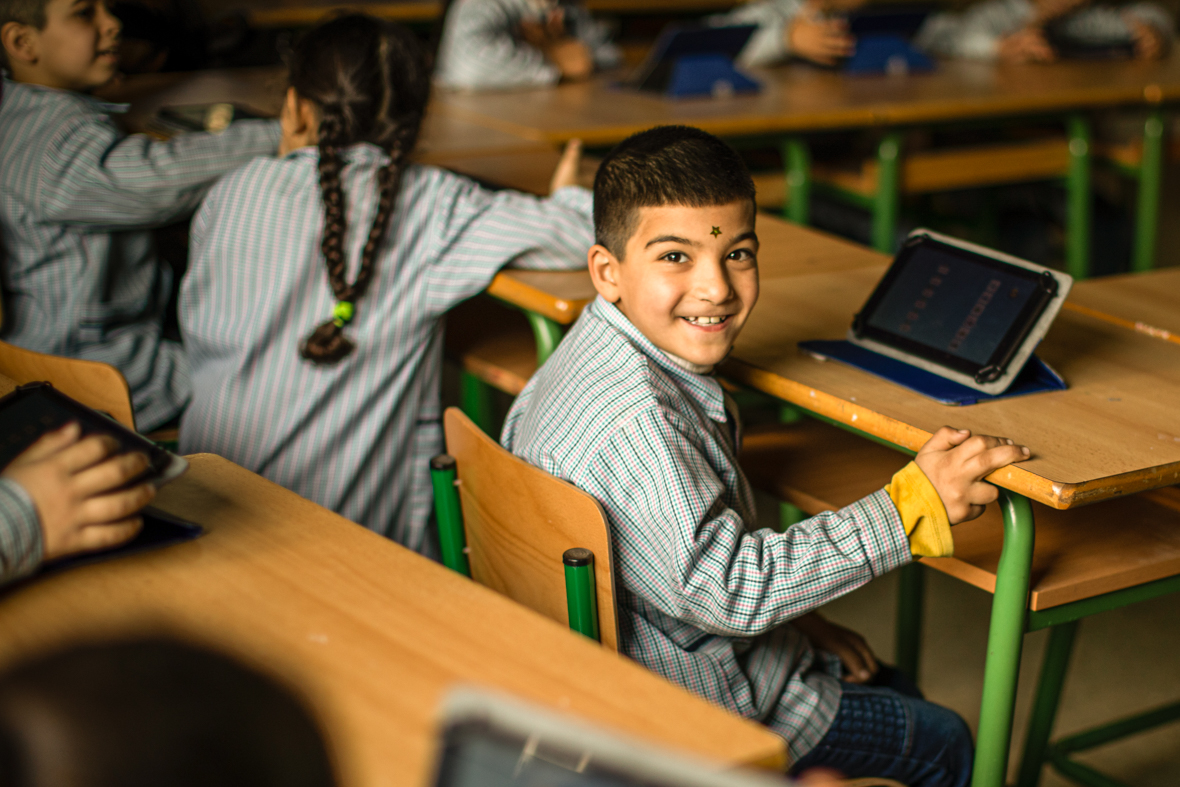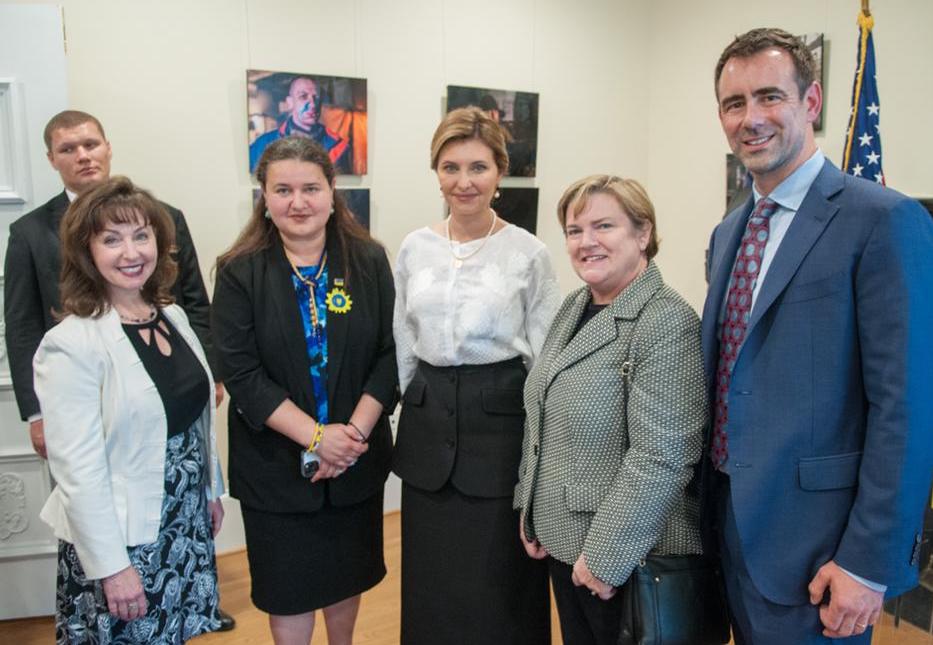
World leaders must back new education in emergencies fund with action and money
Children in conflicts, Education funding, Education in emergencies
Film star and UNICEF Goodwill Ambassador Orlando Bloom visits a school at Slovyansk in a conflict-hit area of Ukraine to raise awareness of education in emergencies. The actor, best known for his roles in The Lord of the Rings and Pirates of the Caribbean movie series, said: “Every child in humanitarian emergencies deserves a fair chance of a bright future.” Picture: UNICEF/Georgiev
It has a name. It has bold targets. And now it needs the commitment and money from the international community to make it work.
The Education Cannot Wait fund will help millions of children who are deprived of schooling because of emergency situations – including wars, natural disasters and health crises.
The name was announced today, along with the aim to raise almost $4 billion to reach 13.6 million children within five years and 75 million by 2030.
So the pieces are now in place and there can be no excuses. International leaders and donors must step up at the first World Humanitarian Summit this month and deliver the funding to ensure children in emergencies are in school and safe from child labour, child marriage, trafficking, recruitment into armed groups, abuse and exploitation.
It is time to end the shameful situation where less than 2% of all humanitarian aid goes to education.
The #SafeSchools petition, signed by thousands of A World at School supporters, will be delivered to leaders at the summit in Istanbul. It demands that promises are turned into action to help the millions of children who are being robbed of a future.
Ben Hewitt, A World at School’s Director of Campaigns and Communications, said: “World leaders are waking up to the fact that children caught up in a natural disaster of conflict must not be left stranded without an education.
Syrian children on their first day back at school in Homs City in 2015 Picture: UNICEF/Sanadiki
“Providing emergency support such as food, clothing and shelter is vital but education gives children a future.
“Campaigners around the world are now calling on their leaders to put much-needed money and support behind the new fund for education in emergencies to be launched within weeks. It’s time to turn the rhetoric into reality and get kids in a safe school now.”
The fund’s name and targets were announced by the United Nations children’s agency UNICEF as a report published today revealed a quarter of the world’s school-age children – 462 million – live in countries affected by crisis.
Nearly 75 million children aged from three to 18 in 35 countries are considered in desperate need of education or help to stay in school.
The fund will seek support from new donor countries, the commercial sector, foundations, philanthropists, diasporas and faith-based groups, as well as traditional donors. It will be launched by UNICEF with partners including UN Special Envoy for Global Education Gordon Brown, the UN refugee agency UNHCR and governments.
Mr Brown and A World at School’s supporters and partners have played key roles in the new fund being established.
He cranked up the pressure in a speech at the World Economic Forum in January 2015, where he said: “We need an emergency fund for education when there are humanitarian crises. We should not have to wait more than a year for help to come when we have a plan and could act immediately. A child needs hope and education and a future.”
Philippines boy walks near destroyed school in Tanauan town after Typhoon Haiyan Picture: UNICEF/Reyna
According to INEE (Inter-Agency Network for Education in Emergencies), that speech set the ball rolling and “prompted a renewed conversation among developing and donor countries, UN agencies and non-government organisations about how best to solve these challenges”.
In July 2015 a joint call to action, led by A World at School and signed by more than 40 leading NGOs and campaign organisations, demanded “new and immediate finance” to deliver education in emergencies.
At the Oslo Summit on Education for Development that month, agreement was reached on the need to create a special fund.
In the months since, the pressure has been kept up by A World at School supporters, who signed the #SafeSchools petition.
A World at School, our network of Global Youth Ambassadors and our sister organisation the Global Business Coalition for Education have all played prominent roles in the setting-up of the fund by giving their views.
Today’s report – Education Cannot Wait: a fund for education in emergencies – was commissioned by a range of partners and produced by the Overseas Development Institute. It said the new fund would disburse aid at the first sign of upheaval and provide longer-term funding in protracted crises.
A child who is out of school for more than a year is unlikely to return and girls are 2.5 times more likely to drop out of school than boys.
The report added: “Education can be a driver of stability, reconciliation and peacebuilding, and a buffer against future social and economic shocks.
“If education is not used as a lever to break the cycle, then crises will continue to be repeated.”
More news

